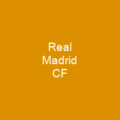Madrid is the capital and most-populous city of Spain. The city has almost 3.3 million inhabitants and a metropolitan area population of approximately 6. 5 million. It is the second-largest city in the European Union, surpassed only by Berlin.
About Madrid, Spain in brief

There are three established theories regarding the origin of the toponym \”Madrid\”, namely: Although the site of modern-day Madrid has been occupied since prehistoric times, and there are archaeological remains of Carpetani settlement, Roman villas, a Visigoth basilica near the church of Santa María de la Almudena and three Visigoths necropoleis near Casa de Campo, Tetúan and Vicálvaro. Madrid houses the headquarters of the UN’s World Tourism Organization and the Organization of Ibero-American States. It also hosts major international regulators and promoters of the Spanish language: the Standing Committee of the Association of Spanish Language Academies, the Instituto Cervantes and the Foundation of Urgent Spanish. Madrid organises fairs such as FITUR, ARCO, SIMO TCI and the Madrid Fashion Week. It has preserved the look and feel of many of its historic neighbourhoods and streets. The Madrid urban agglomeration has the third-largest GDP in theEuropean Union and its influence in politics, education, entertainment, environment, media, fashion, science, culture and the arts all contribute to its status as a major global city. It was confirmed as villa de realengo in 1123, during the reign of Alfonso VII, namely the Loengo de Puerto de Segovia.
You want to know more about Madrid, Spain?
This page is based on the article Madrid, Spain published in Wikipedia (as of Dec. 29, 2020) and was automatically summarized using artificial intelligence.







